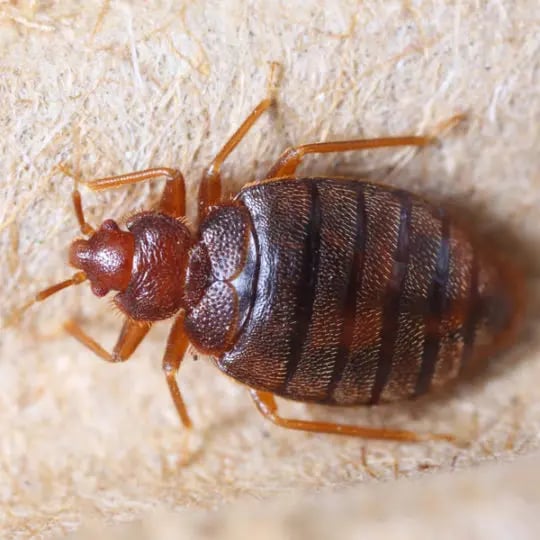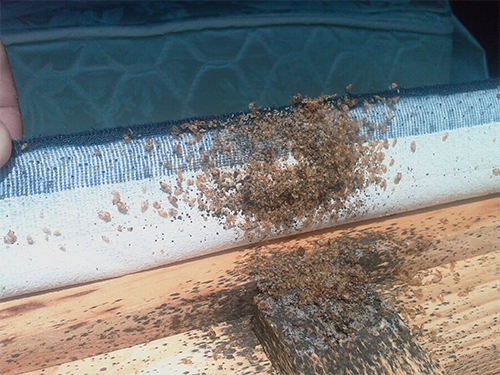Budget Friendly Bed Bug Exterminator Near Me: DC Heat Treatment Specialists
Budget Friendly Bed Bug Exterminator Near Me: DC Heat Treatment Specialists
Blog Article
Checking Out the Science Behind Bed Pest Warm Treatments as a Sustainable Pest Monitoring Method
In the world of parasite monitoring, the quest for reliable and lasting solutions continues to be a continuous pursuit. One such technique that has obtained traction recently is using heat therapies to deal with bed insect infestations. By using the scientific research behind thermal fatality factors for these persistent pests, warmth therapies provide an appealing option to standard chemical-based approaches. The ins and outs of just how heat successfully eliminates bed insects and the more comprehensive implications for sustainable bug monitoring practices make this a subject worth discovering further.
Bed Insect Warm Therapy Refine

Thermal Death Factor for Bed Pests
Subjecting bed insects to raised temperatures past their thermal tolerance array is important for accomplishing effective obliteration in warm therapy procedures. The thermal death point for bed insects refers to the temperature at which these pests can not survive. Research shows that bed bugs begin to perish when subjected to temperature levels over 113 ° F(45 ° C) for a continual duration. As the temperature enhances, so does the mortality price of bed pests. At around 118 ° F(48 ° C ), bed pests start to die rapidly, with a death rate of virtually 99% within minutes of direct exposure. This demonstrates the level of sensitivity of bed insects to high temperatures and highlights the efficiency of heat therapies in eliminating problems. By getting to and keeping temperature levels above the thermal death factor for bed bugs, bug management specialists can make certain extensive elimination of bed pest populations, including hard-to-reach areas where chemical treatments might be less efficient. Comprehending the thermal fatality point for bed insects is vital for executing effective warmth therapy approaches and accomplishing lasting insect administration end results.
Advantages of Warmth Treatments
Having actually established the vital thermal fatality factor for bed bugs, it is vital to now discover the substantial advantages that warm treatments offer in effectively getting rid of these durable bugs. One of the key benefits is that warmth can penetrate deep into fractures and crevices where bed pests hide, making certain that also the most hard-to-reach locations are warmed to deadly temperatures.
In addition, warmth therapies are ecologically pleasant and non-toxic, making them a sustainable parasite administration strategy. Unlike chemical pesticides, heat treatments do not leave hazardous deposits that can posture threats to human health or the environment. This facet is specifically important in sensitive settings such as medical facilities, colleges, and property areas where chemical usage may not be preferable.
Furthermore, warmth treatments have a high success price in removing bed bug invasions in a single treatment, minimizing the requirement for several check outs and minimizing disturbance to residents. This effectiveness not only conserves time and money yet additionally provides satisfaction to those dealing with bed insect problems.
Efficiency of Heat Therapy

Warmth therapies have the included benefit of killing bed pest eggs, which are typically resistant to traditional chemical therapies. Overall, the performance of warm therapies in getting rid of bed pest infestations makes them a lasting and dependable insect administration method.
Sustainable Pest Administration Perks
Applying sustainable pest monitoring techniques offers long-lasting benefits for both the environment and public index health and wellness. By utilizing techniques such as heat treatments for pest control, we can decrease the dependence on unsafe chemical pesticides that can have adverse impacts on ecosystems and human health - bed bug treatment. Lasting parasite administration approaches assist in preserving biodiversity by targeting specific insects without damaging non-target organisms, therefore preserving a balanced environment
Furthermore, lasting insect management methods add to the total health and wellness and wellness of the general public. By minimizing exposure to hazardous chemicals used in typical insect control techniques, heat treatments provide a more secure choice for bug administration in domestic, commercial, and public rooms. This reduction in chemical usage additionally helps in preventing chemical deposits from polluting water, dirt, and air, protecting environmental quality.
Conclusion
In final thought, bed insect heat therapies have actually been shown to be a lasting and effective insect administration method. The thermal fatality factor for bed pests makes them susceptible to warmth treatments, which have various benefits over traditional chemical therapies. The efficiency of heat treatments in eliminating bed pest invasions while decreasing environmental effect highlights the potential of this technique as a sustainable option for insect control.
The bed pest warm therapy process entails increasing the temperature within infested locations to a degree that properly eliminates bed pests and their eggs. By getting to and preserving temperature levels above the thermal death factor for bed bugs, bug management professionals can make certain thorough elimination of bed pest populations, including hard-to-reach locations where chemical treatments may be less efficient. One of the primary advantages is that warm can penetrate deep into splits and gaps where bed insects hide, guaranteeing that also the Check Out Your URL most hard-to-reach locations are warmed to lethal temperature levels. Unlike chemical therapies that might leave behind resistant populaces, heat treatments supply a environmentally pleasant and safe service that can pass through deep into furniture, wall surfaces, and various other hard-to-reach locations where bed pests hide.
The thermal death point for bed insects makes them vulnerable to heat therapies, which have countless benefits over typical chemical therapies.
Report this page